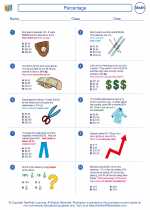What is a Circle?
A circle is a closed curve in which all points on the curve are equidistant from a fixed point called the center. The distance from the center to any point on the circle is called the radius, and the distance across the circle passing through the center is called the diameter. The ratio of the circumference of a circle to its diameter is a constant value denoted by the Greek letter π (pi), which is approximately 3.14159. The formula for the circumference of a circle is C = 2πr, where r is the radius, and the formula for the area of a circle is A = πr2.
Key Concepts to Understand
- Radius: The distance from the center of a circle to any point on the circle.
- Diameter: The distance across a circle passing through the center, equal to 2 times the radius.
- Circumference: The distance around the edge of a circle, given by the formula C = 2πr or C = πd, where d is the diameter.
- Area: The measure of the space enclosed by a circle, given by the formula A = πr2.
Formulas for Circles
Circumference: C = 2πr or C = πd (where r is the radius and d is the diameter)
Area: A = πr2 (where r is the radius)
Sample Problems
- Find the circumference of a circle with a radius of 5 cm.
- Find the area of a circle with a diameter of 12 inches.
Solution: C = 2π(5) = 10π cm, or approximately 31.42 cm.
Solution: r = d/2 = 12/2 = 6 inches, A = π(62) = 36π square inches, or approximately 113.10 square inches.
Summary
In summary, a circle is a closed curve with all points equidistant from the center. The radius is the distance from the center to any point on the circle, the diameter is the distance across the circle passing through the center, the circumference is the distance around the edge of the circle, and the area is the measure of the space enclosed by the circle. Key formulas for circles include C = 2πr and A = πr2 for the circumference and area, respectively.
[Circle] Related Worksheets and Study Guides:
.◂Math Worksheets and Study Guides Sixth Grade. Percentage
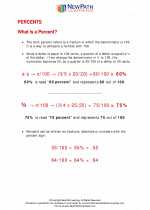
 Activity Lesson
Activity Lesson
 Worksheet/Answer key
Worksheet/Answer key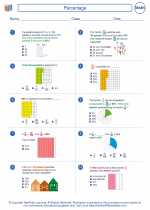
 Worksheet/Answer key
Worksheet/Answer key
 Worksheet/Answer key
Worksheet/Answer key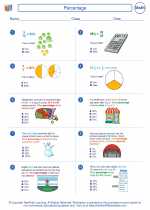
 Worksheet/Answer key
Worksheet/Answer key
 Worksheet/Answer key
Worksheet/Answer key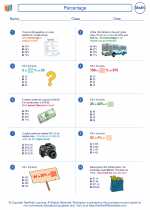
 Worksheet/Answer key
Worksheet/Answer key